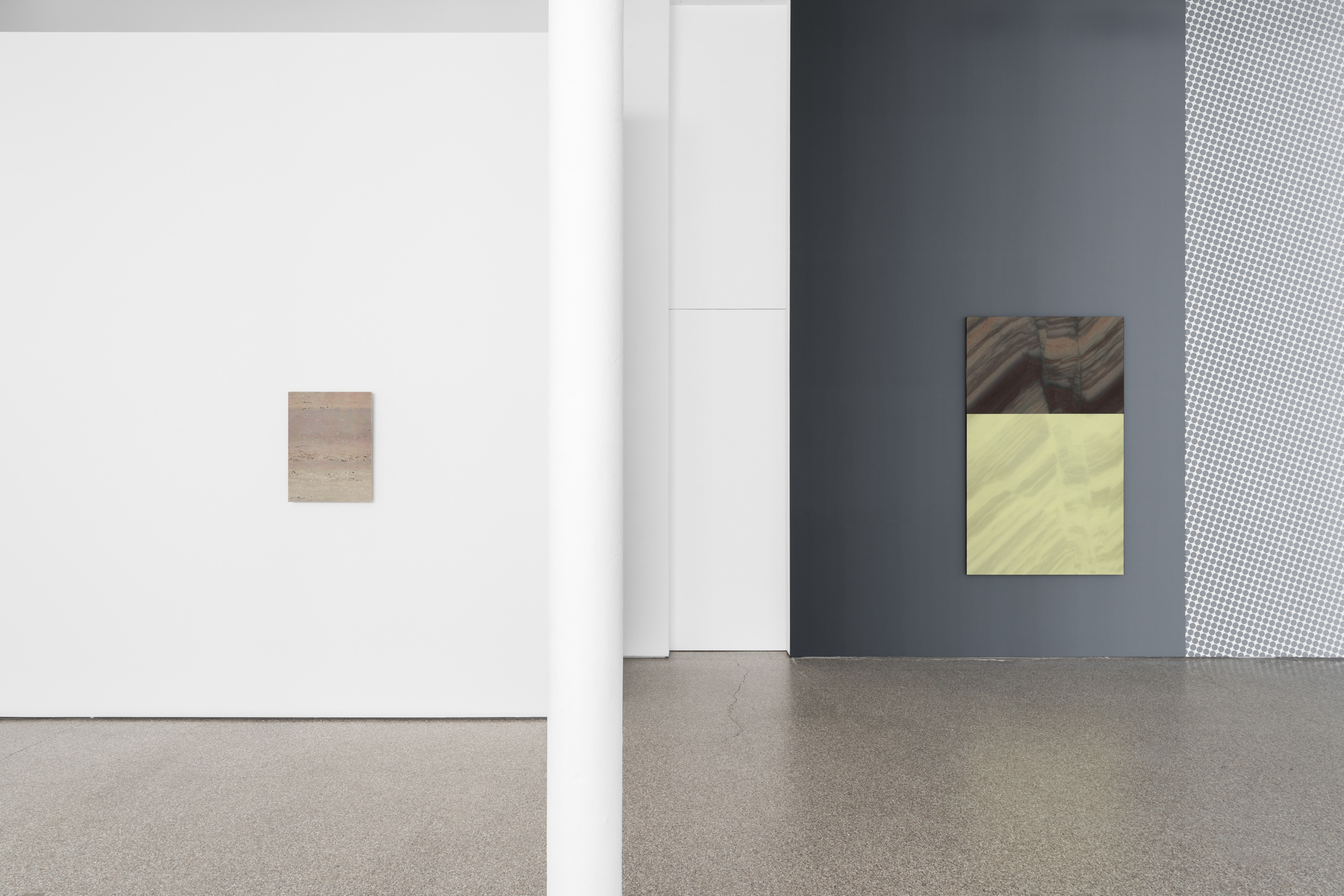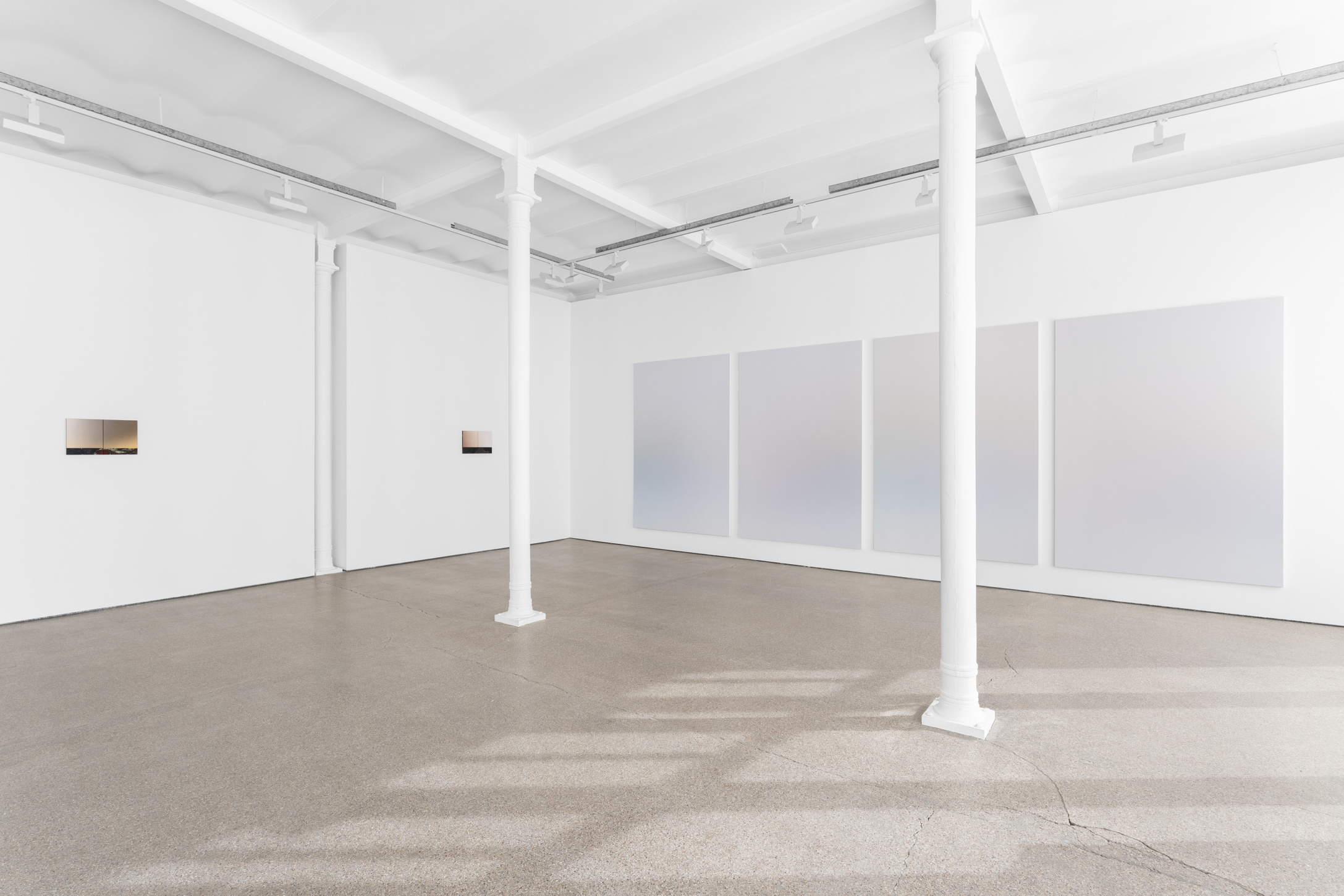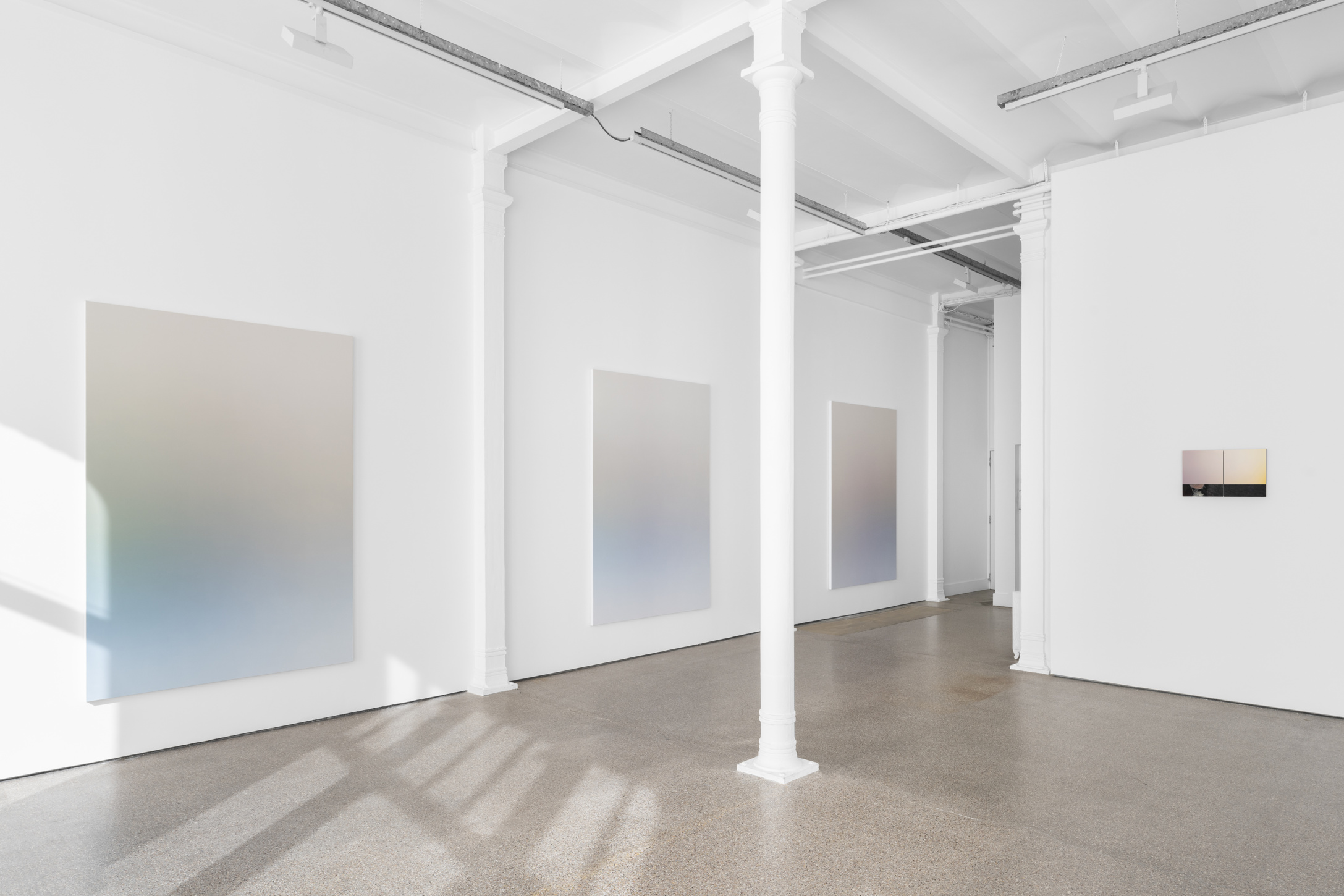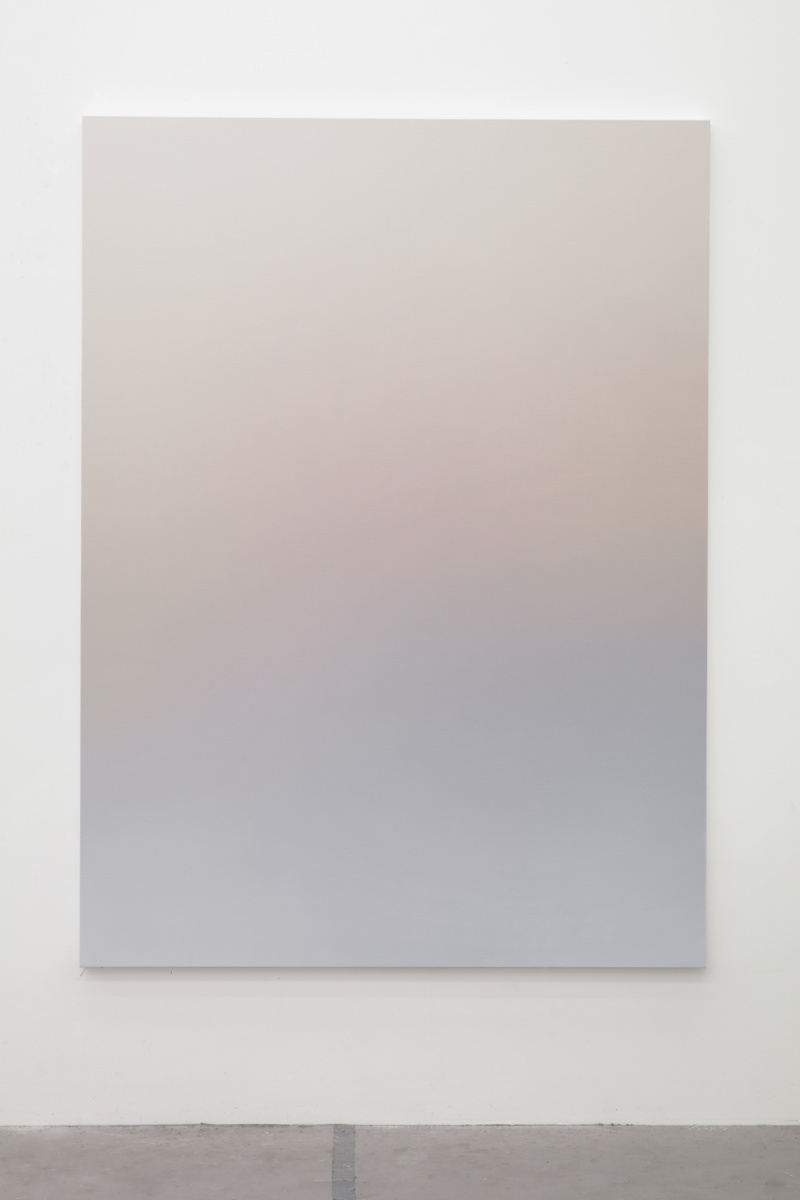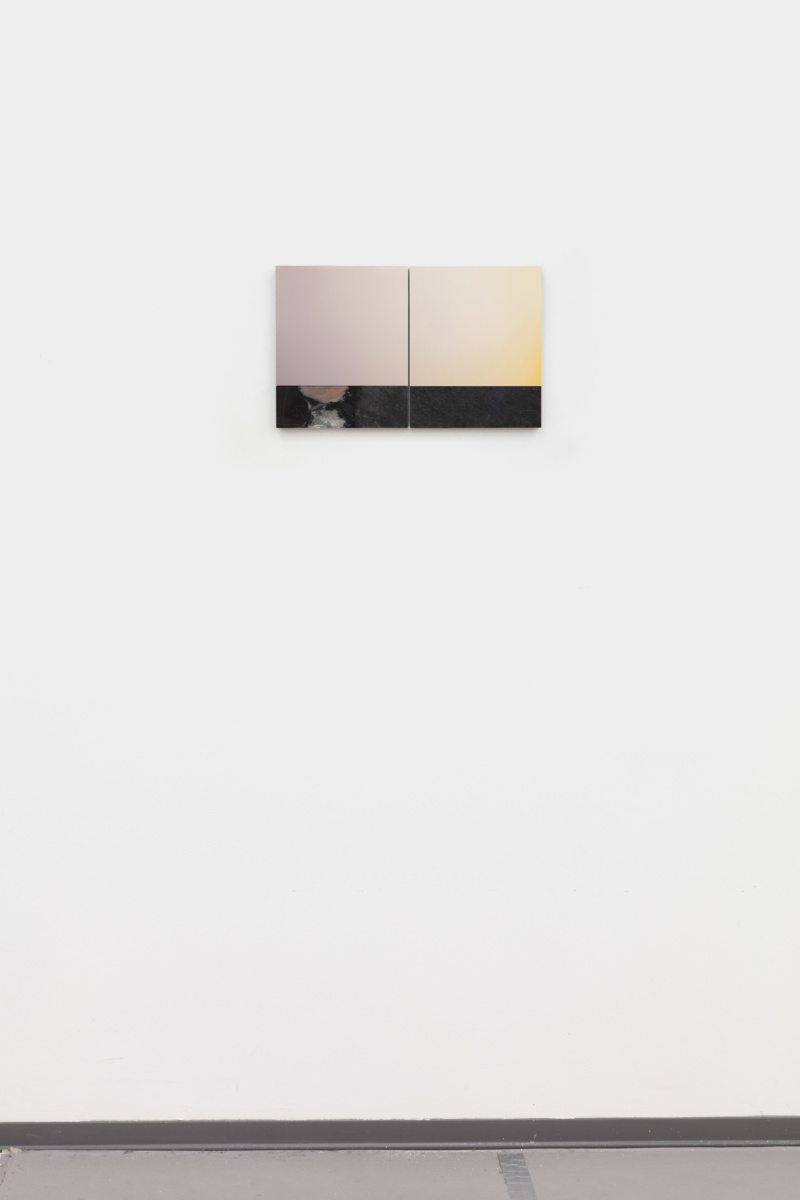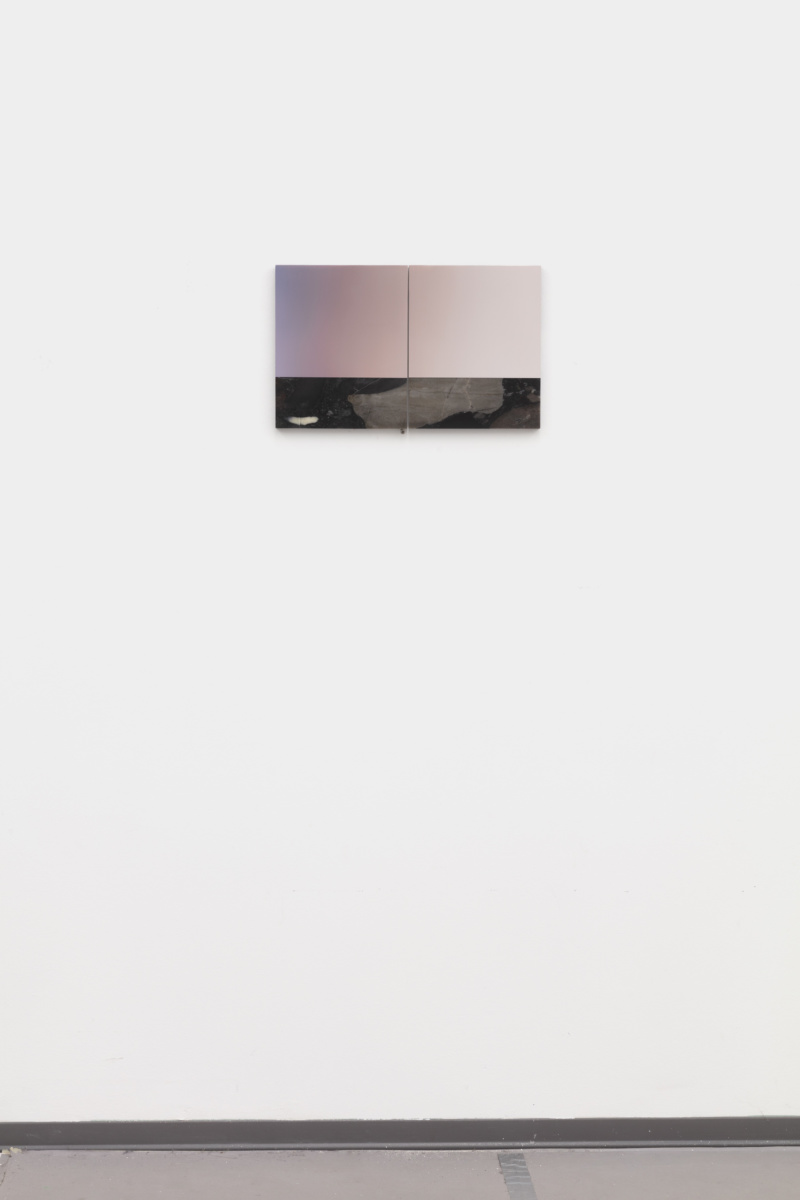HUBBLE TROUBLE is Pieter Vermeersch’s third solo exhibition at Galerie Greta Meert. For this installation, the artist produced a new body of work where he brings together and combines a mural painting with works on canvas, as well as painted and silkscreened marbles, into an architectural ensemble that extends across two floors.
Vermeersch deploys painting and adjacent pictorial strategies as instruments to create images that maintain a compound relationship to time, space and matter, thereby oscillating between abstraction and representation. In alluding to the technological eye of the space telescope, the artist continues his exploration of the uncertainties that arise in the act of looking deeper. For Vermeersch, these uncertainties, or troubles, become the engine of the work. By looking deeper in an attempt to confirm something about existence that nonetheless remains elusive, a paradoxical relationship becomes visible. The complex technological tools or pictorial techniques involved in capturing and expending our understanding of time and space on the one hand; and the inevitable glitches and pictorial failures that ensues on the other hand, come to form an abstract language that emerges from reality, only to show the limits of our perception.
This abstract language is activated in Vermeersch’s color gradients. These paintings are the result of a meticulous process whereby the artist becomes a kind of human printer—blending paint into smooth and seamless surfaces that conceal the labor involved in making them. These seemingly straightforward paintings and the illusory space they conjure aim to register a presence while also allowing that presence to expand through representation and test the limits of what can constitute an image. Here, a painting technique that requires control and mastery is put to use for the translation of poor technical images—accidental photographs or images without spatial referents, photographs of undefined shadows, clear skies or architectural details. In the process of filtering these already abstract photographic sources, painting liberates itself from any referent to invent a formless representation that enables a purely physical and perceptual experience. This physical experience, which requires the presence of the body in space entails a slow way of looking that counters the fast consumption of images that prevails in our day to day.
In the artist’s new silkscreened marble, the reality of the material itself and that of its representation are conflated. Rasterised photographic images of the surface of the marble are consecutively silkscreened on top of the surface they depict using the CMYK principle. In this tautological operation, the image dissolves into the material to blur the line between matter and representation—the two central elements of our visual world. The geological time crystallised in metamorphic rock is also present in a series of painted marble diptychs that evoke abstract landscapes. Painted directly onto the geology of the divided marble slabs, these luminous landscapes, which are also divided in two parts are confronted to the actual surface of the marble, and in turn, they take on a quasi photographic quality. From hyperrealistic abstraction to formless representation, Pieter Vermeersch devises a constant back and forth that reflects our need to simultaneously divide and connect time and space, abstraction and representation.
Pieter Vermeersch (1973, Kortrijk, Belgium) lives and works in Brussels, Belgium and Torino, Italy. Recent solo exhibitions include: Museum M (2019), Leuven; Office Kersten Geers David Van Severen (2019), Brussels; NC-arte (2019), Bogota, Columbia. Recent group exhibitions include: “On the lookout” (2022) Fondation CAB, Brussels (Belgium); “Spring” (2021) Fondation Thalie, Brussels (Belgium). In 2019, Vermeersch received the “Best Exhibition Award” from AICA for his solo exhibition at Museum M in Leuven (Belgium).














